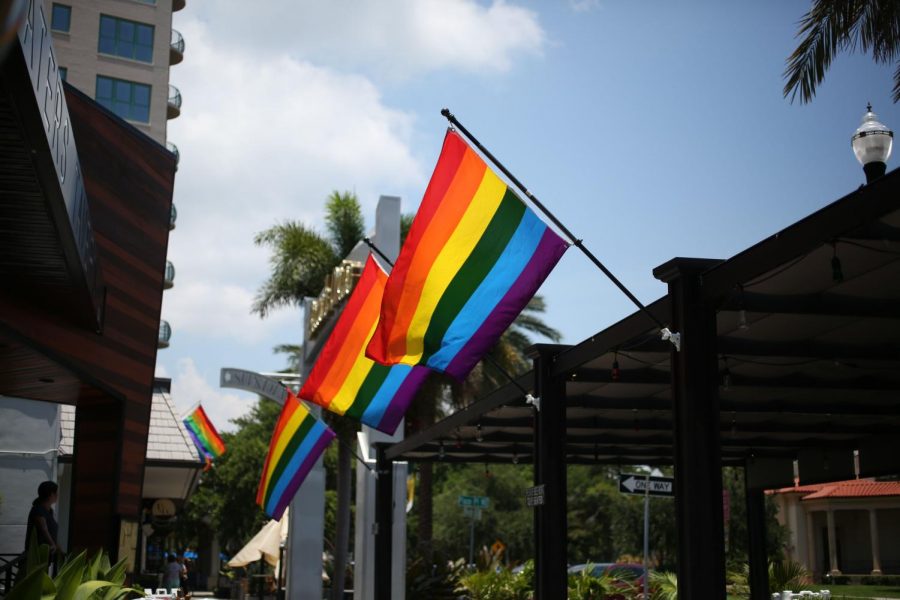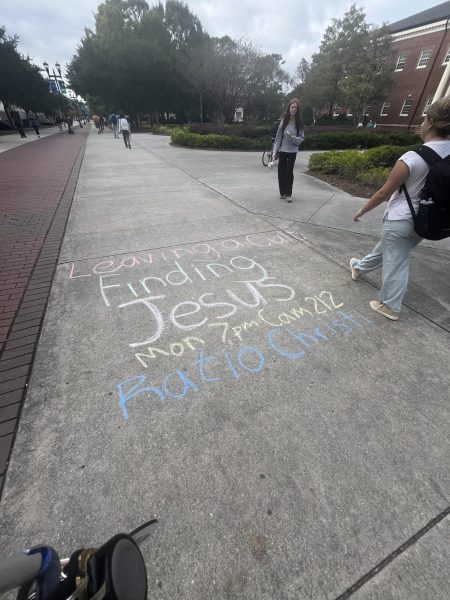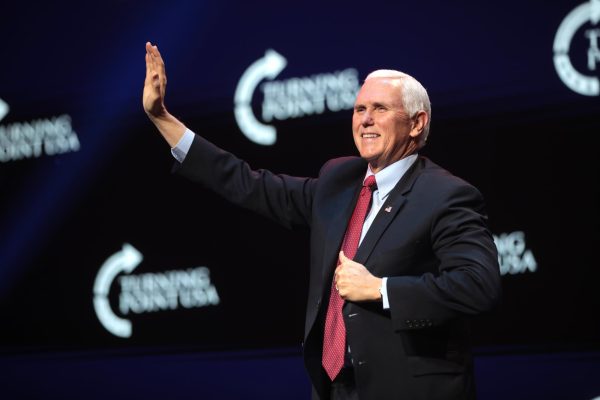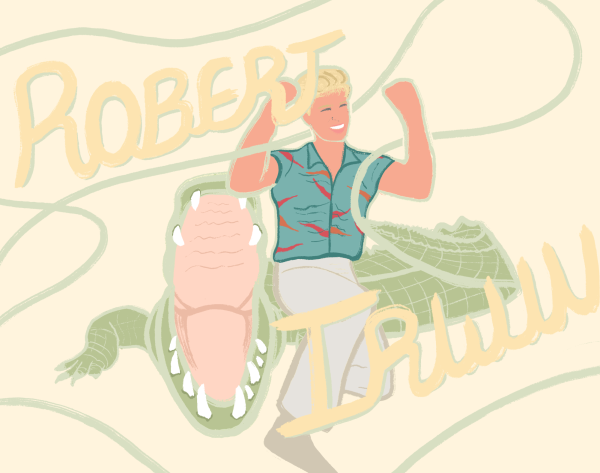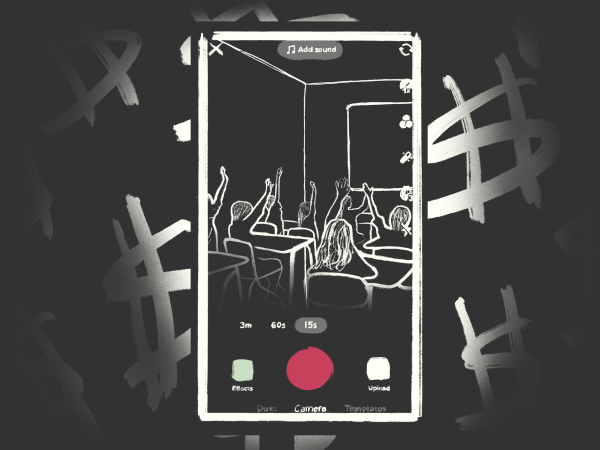Pride Month is supposed to be proud, not scary
Tribune News Service
During Pride Month in St. Petersburg, rainbow flags fly in front of local businesses or in shop windows.
June is gay (LGBTQ+) pride month. Everywhere seems to be sporting a pride flag to show off how progressive and accepting they are and a decent amount of people are, or would be. Considering the Coronavirus (COVID-19) has made public gatherings impossible including marching in support of LGBTQ+, people are still finding ways to celebrate. At its most basic level, pride celebrations say, “Hey, we are pretty damn happy we exist and we are relatively accepted.” Not just the LGBTQ+ community join in on the celebration, but it includes straight allies who support other fellow human beings. The question is, why is June specifically pride month? The answer is simple.
In the late 1950s and into the 60s, LGBTQ+ rights were much less pronounced than they are today. In the early 1960s, there was a massive campaign started by mayor Robert F. Wagner Jr. to rid New York City completely of gay bars. The Stonewall Inn notoriously welcomed homosexuals, transvestites and drag queens. A bouncer would stand by the door, preventing people who looked like police, heterosexuals, or untrustworthy people from entering. On June 28, 1969 at 1:28 AM, a group of officers arrived at the front door of the Stonewall Inn.
The normal procedure would be for female police officers to take any customers dressed as women to the bathroom to verify their sex, resulting in any people appearing to be physically male and dressed as a woman being arrested. Tensions began to rise as police officers began inappropriately touching some of the females present while frisking them. A crowd began to gather outside, quickly drawing in the police officers and the amount of people who had been arrested.
After a woman was hit in the head with a baton by a police officer, she shouted “Why don’t you guys do something?” at the assembled bystanders as she was put into the police car. This simple call for help ignited the crowd into chaos. Within a matter of minutes, the gathering turned into a full-blown riot, eventually leading to a series of protests that lasted for five days. These riots are known as the 1969 Stonewall Riots, a major catalyst for pushing the gay rights movement into the mainstream. Since then, LGBTQ+ rights in the United States have been turbulent, with things like the Defense of Marriage Act passed in 1996 by Bill Clinton, which defined marriage as explicitly between a man and a woman.
One of the most major victories for LGBTQ+ people was when the Supreme Court ruled that gay marriage should be legalized in the United States in 2015. Transgender rights have been their own battle, especially under President Donald Trump, whose administration recently revoked healthcare protections for transgender people about a week ago. It feels rather unfortunate that this falls during pride month, especially when the Orlando nightclub shooting, the deadliest terrorist attack in the United States since 9/11 as well as the deadliest single act of violence against LGBTQ+ people in the USA, just experienced its fourth anniversary.
Events like the Orlando nightclub shooting, revoking healthcare protections for transgender people, Operation Pridefall (which is just as lovely as it sounds) and the National Coalition of Anti-Violence programs report that hate-violence increases towards LGBTQ+ people during pride month, which mixed together make pride month a lot more scary.
My boyfriend and I have experienced this in our own ways. They are non-binary, which means that they do not identify as either male or female. I can vividly recall the horror in their eyes when it came out that Trump would be revoking their rights to healthcare. President Trump gets trashed in a myriad of ways by a plethora of media sources, but this is one specific instance of his administration hurting the American people.
The two of us can feel the scrutiny when we are out on a date at a fancy restaurant in Boone, my hometown, whose population is usually pretty evenly split between an older, conservative population and Appalachian State University students. It is quite often that we get looks with older couples trying to figure out what we are. We can feel it when we hold hands and walk down the street. We can feel it when we are walking through a parking lot and hear a sudden, loud noise. Statistically, we are not very likely to get shot at or harassed in public, but the fear is still there. Beyond COVID-19, going out in public has seemed a lot less appealing.
The back of my car has a “Love is Love” sticker with a rainbow underneath it. Especially now, I have held my breath when I go outside, praying that I am not going to find my tires slit or my car keyed. I have felt the judgment when one of my closest friend’s first responses to us coming out was, “would you still love them if they had a penis?” I can still feel the judgment when I introduce them by their new name and as my boyfriend, but despite the obvious fears and judgment, I stay proud of them. I stay proud because I am with them.
The only people who seem to care much are people who have been built upon their judgments and ideas on the way that the world is supposed to be. Little kids do not care, and most people my age do not care. Only their parents and grandparents seem to ever have something to say or something they feel like they need to understand. Love is love, and there is not too much to it beyond that. I am very happy to be with them and I am certain they feel the same way. We love each other quite a lot and I do not think there is anything less complicated in the entire world.
LGBTQ+ rights still have a very long way to go. Until I can introduce my partner to every person I meet in complete comfort, not have to sigh in relief every time I see my car and not get weird looks in public, they will still have a long way to go. I am one of the lucky ones, too. There are people who get thrown out of their houses for coming out, people who lose all of their friends, and in other countries, people get executed for being the way that they are. LGBTQ+ rights have come a very long way, but they still have miles to go until we reach the finish line.



